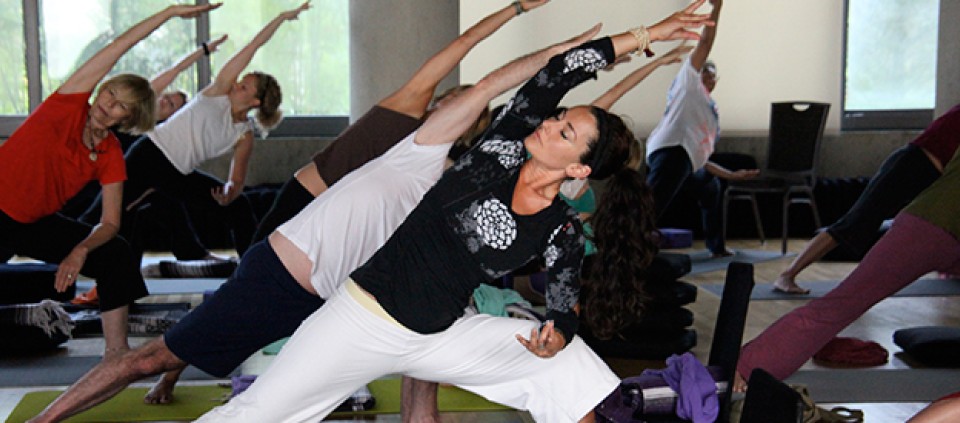Yoga, Anatomy, and the Art of Connection: A Q&A with Michelle Dalbec

In this Q&A, Kripalu School of Yoga faculty member Michelle Dalbec discusses how anatomy affects your yoga practice, how yoga translates off the mat, and what to be aware of when starting a home practice.
Does anatomy really affect what postures we can do, or does our mastery of postures depend on how frequently we practice?
Definitely anatomy affects what we can do, and how we do it. I had a student who had been practicing yoga for 15 years, and even after all that time, when she did Seated Forward Bend, her back was still almost perpendicular to the floor. It might have been something about the depth of her hip socket, or maybe she had shorter hamstrings. Every body is constructed differently. The way the bones are shaped and sit together is unique to each of us. And we each have so-called “issues in the tissues”—stress and tension that reside in the physical body and can affect our mobility. Trauma, whether physical or emotional, has a lasting effect on the soft tissues of the body. So even though your pose may not look like the cover of Yoga Journal, you can experience the essence of the posture. When you find stability, ease, and expansion, that’s your posture.
How do you know whether you can change these things over time, or whether it’s just the way you’re built?
I’ve heard it said that practice is the best education. My connection with my body is like a relationship: When I’m in a relationship, I want to continue to know about the other person, and how they’re changing. With my body, when I observe and witness over time, I begin to tune in to what’s shifting and changing, what’s a temporary muscular issue and what’s part of the way my body is constructed. The Kripalu methodology teaches that, when you come to your edge, you hang out there and witness what’s happening without judgment—breathe, relax, feel, watch, and allow—and move forward from there.
It’s also important to remember that we can’t isolate what we do on the mat. We also need to look at how we move and live off the mat. How do you carry your backpack or handbag, what’s your posture like when you sit at the computer, how do you hold yourself when you’re in a tense conversation with someone? The mat is the laboratory and the playground, but when you step off the mat, that’s where the rubber meets the road.
Could you share one way in which you use yoga off the mat?
One of the simplest, most powerful ways to use yoga off the mat is by stopping to connect with the breath when you’re feeling an intense emotion, whether it’s anxiety or anger or even joy—any powerful emotion. Watch how the breath can reconnect you to your body, just as it does when you’re feeling intense sensations in a yoga posture. When I’m on the mat, I’m watching the conversation that’s happening as my body encounters the experience, and then as my mind reacts. My practice off the mat is to watch those same conversations as I move through everyday life. Can I watch how my mind processes, without reacting? This “witness consciousness,” as we call it in Kripalu Yoga, gives me huge insight into the flow of my life. It’s a breathing space in which I can pause and be compassionate with myself. I’m not going for bliss or enlightenment—I’m going for expanding more into life and finding more ease and flexibility, both on and off the mat.
For newer yoga practitioners, what tips do you offer when developing a home practice? Is it harder to develop safe alignment because there’s no one there to observe what you’re doing and offer adjustments?
Yes, it is possible to be misaligned and also to fall into ruts—with a home practice, it’s easier to resist what feels challenging, and just do what feels more comfortable, and that can cause an imbalance in your practice. It might be helpful to practice in front of a full-length mirror—not for the whole time, but for a few postures. Sometimes, when we’re still developing our proprioception (the sense of the relative positions of the various parts of the body), it’s easier to see misalignments than it is to feel them in the body. But, most important, I encourage my students to empower themselves—do research, search the web, watch DVDs, read yoga books, go to classes, and allow all that to inform your practice.
© Kripalu Center for Yoga & Health. All rights reserved. To request permission to reprint, please e-mail editor@kripalu.org.